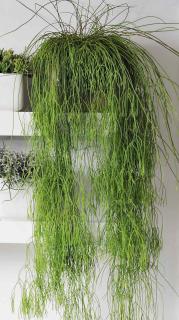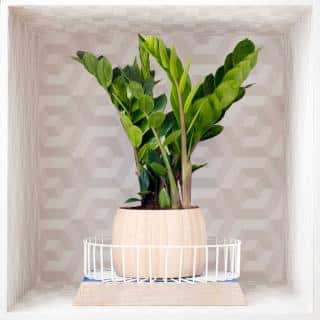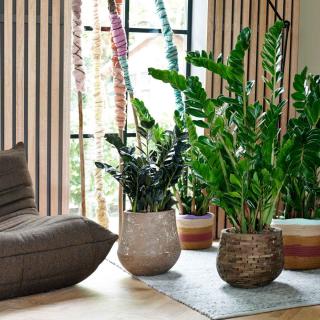

Rhipsalis and Zamioculcas are two trendy leaf plants catching all eyes wherever they’re grown.
Not only does their out-of-this-world leafage impress guests and visitors, but caring for these trendy leaf plants is as easy as can be!
Let’s take a closer look at these two beautiful plants.

It’s also found on certain islands of the Indian Ocean and in some parts of Africa, where it thrives on shady tree trunks.
There are a host of different colors and shapes. Each variety boasts various possible leaf thicknesses and fleshy meat. They all have one point in common: no thorns at all, and long sprigs that give the plant a “hairy” look.
Native to East African rocky plains, the Zamioculcas plant produces thick stems ridged with pairs of thick, lush, shiny green leaves. Since it’s used to arid seasons, it won’t throw a fit if you forget to water it every now and then.

Set your rhipsalis up high, in a suspended pot or atop a shelf. Its cascading leafage will fill you with joy. If stems get too long, trim them.

In both cases, you’re dealing with tropical plants that don’t really like dry air. In winter, heating tends to dry the air up indoors. It’s best to group your plants together and mist them with soft water on a regular basis.
Rhipsalis stems easily grow from cuttings in a mix of acidic heath soil and sand. Same thing for zamioculcas stems. Alternatively, simply let them sprout roots in a glass of water, among other ways to propagate Zamioculcas.
Laure Hamann, minor edits by Gaspard Lorthiois